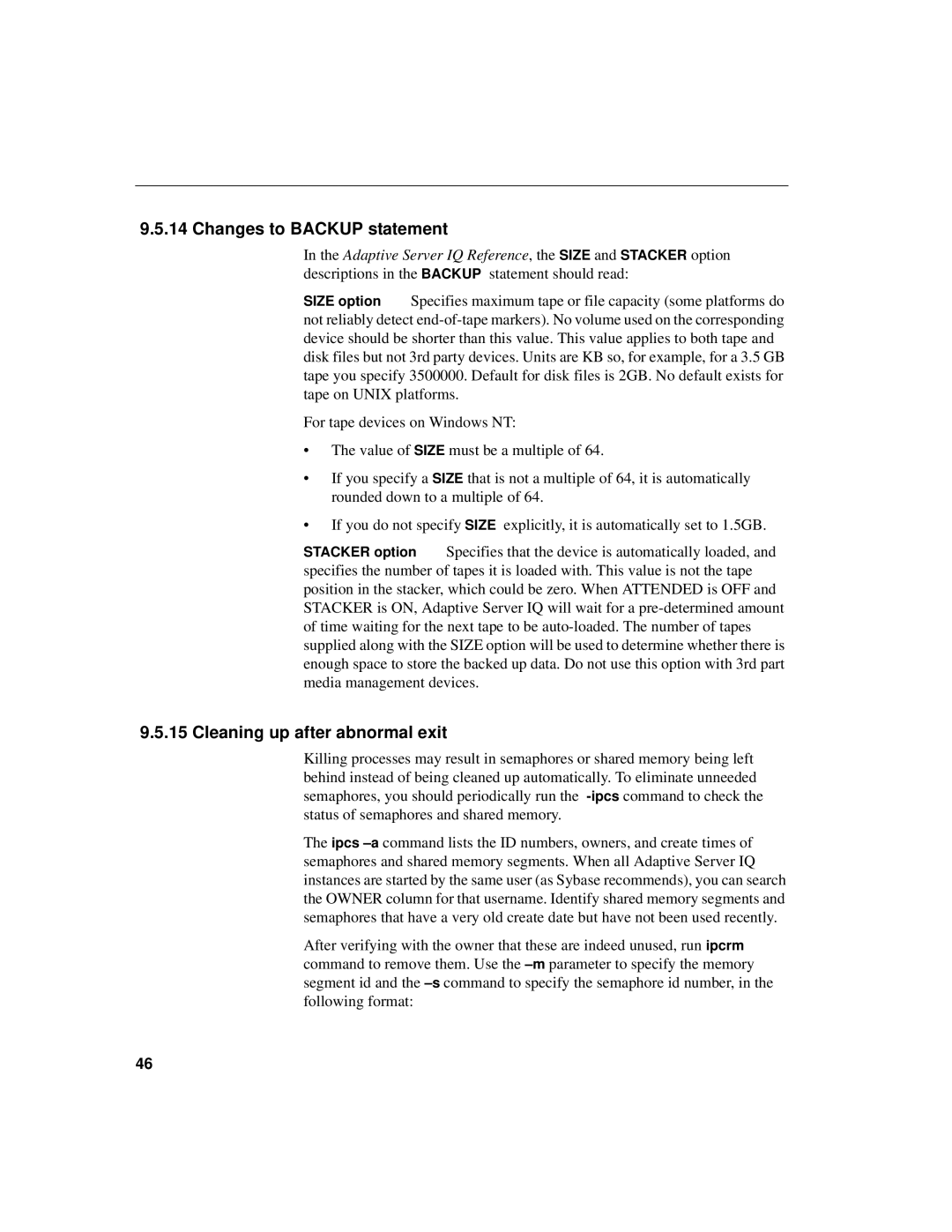9.5.14 Changes to BACKUP statement
In the Adaptive Server IQ Reference, the SIZE and STACKER option descriptions in the BACKUP statement should read:
SIZE option Specifies maximum tape or file capacity (some platforms do not reliably detect
For tape devices on Windows NT:
•The value of SIZE must be a multiple of 64.
•If you specify a SIZE that is not a multiple of 64, it is automatically rounded down to a multiple of 64.
•If you do not specify SIZE explicitly, it is automatically set to 1.5GB.
STACKER option Specifies that the device is automatically loaded, and specifies the number of tapes it is loaded with. This value is not the tape position in the stacker, which could be zero. When ATTENDED is OFF and STACKER is ON, Adaptive Server IQ will wait for a
9.5.15 Cleaning up after abnormal exit
Killing processes may result in semaphores or shared memory being left behind instead of being cleaned up automatically. To eliminate unneeded semaphores, you should periodically run the
The ipcs
After verifying with the owner that these are indeed unused, run ipcrm command to remove them. Use the
46
